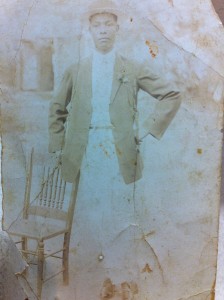The Beatles have been my favorite band since I was probably in 1st or 2nd grade. My first album was Meet the Beatles. From there it was a years-long and still-current obsession involving things like bootleg purchases, Beatles A-Z weekends on local radio, Beatlefest in Los Angeles, and lyric memorization. I once started a childhood religion based on the worship of John Lennon. But that’s a different blog post.
I know all the trivia involving Paul being dead and Adrienne Kennedy’s adaptation of In His Own Write and John having various threesomes and Eric Burdon being the Eggman.
The obsession, of course, includes films. I’ve visited the sidewalk at Marylebone Station in London where George fell down in A Hard Day’s Night and I can tell you that when it was first broadcast, Magical Mystery Tour, an improvised movie, was in black and white (leading to poor reviews by critics who may have been otherwise swayed by psychedelic colors). These aren’t the most lasting bits of information involving movies, however. My love of everything Beatle (peace and love, peace and love, peace and love, says Ringo) translates into filmmaking lessons based on how they navigated through their bandmate years. It goes something like this:
- Continually try new things. Stop touring and hit the studio. See what it sounds like singing while lying down. Try making movies in different genres, or spending no money, or based on things like inner city black men who don’t get shot.
- It’s fine to not make sense sometimes. John Lennon purposely wrote I Am the Walrus to confound school teachers who’d started analyzing his lyrics in classrooms. Don’t worry about what people think, and if they happen to like what you’ve made, all the better.
- Discover your best way of working. Paul wrote every day. John wrote during moments of inspiration. Ringo created drumbeats after reading lyrics. Find your own way of working instead of listening to what other people say you should do.
- Work with people smarter than you. This is also called “find your George Martin.” When recording Tomorrow Never Knows, John Lennon didn’t understand the technology behind Artificial Double Tracking so called it “the flange.” Don’t worry about knowing the name of every single piece of grip equipment (unless you’re a grip). Focus on vision and big ideas.
- Never be afraid of failure. Decca didn’t sign the The Beatles (famous instance of kicking oneself in the ass). For every 10 failures there has to be at least one success. Some successes are larger than others.
- Put in the hours. Malcolm Gladwell’s now-iconic statistic of The Beatles playing 10,000+ hours in Hamburg, Germany is a great example of how you have to do the work. Keep going. Get behind the camera, spruce up your editing station, and watch thousands of films.
- Give peace a chance. If you’re always arguing, break up. Filmmaking has many solo moments, but it’s essentially a community effort. If you can’t get along with someone or if someone’s treating you with disrespect….
- Find your dream team. Fire your Pete Best. Surround yourself with people who support you and whom you respect. There’s no need to work with assholes. Keep at it until there’s chemistry and things click.
- Provide an environment for new ideas. Yes, The Beatles were loaded. They were supported by a manager, producer, sound technicians, studio heads, and the like. Still, create your own comfortable environment where you know you’ll do your best work. Build your support network.
- Support your team’s preferences. Lead by example and admit when there’s something you don’t know or would rather not do. Ringo let John, Paul, and George decide who went on the Sgt. Pepper cover, because he didn’t care.
- Stop if it’s no longer fun. Life’s too short to waste it on something you don’t absolutely love doing. Cut to Abbey Road rooftop as needed.
Bonus anecdote: I cried when John Lennon died. I was in 6th grade and Howard Cosell announced it during Monday Night Football. My mom started crying, too, until she realized it was John and not Paul. “I thought it was the other one,” she said.



